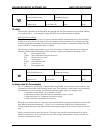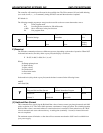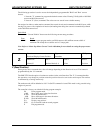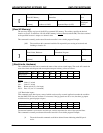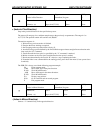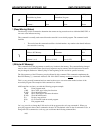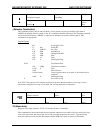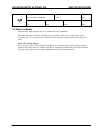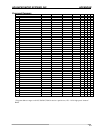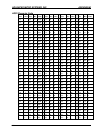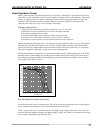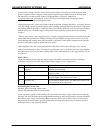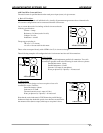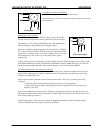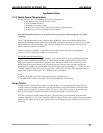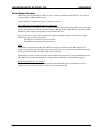
ADVANCED MICRO SYSTEMS, INC. ADDENDUM
65
Application Notes
V1.10 Double Speed Characteristics
The X2 speed (Version 1.10) introduces several new characteristics:
1. Step rates in excess of 36K steps per second.
2. Faster command execution.
3. Intelligent current decay control.
4. Redirect ports 4 and 5 to Step and Direction outputs (mode command).
5. Redirect port 4 as a moving output (mode command).
Note that the minimum step rate is now 40 SPS. Slower step rates are obtained using the “D” (divide)
command.
The I, V, and M commands now have a range of 40 to 36,000 SPS. Values entered below 40 SPS will be
limited to approximately 40 SPS, Values above 36,000 SPS are accepted, and the SPS will increase to a 42,000
SPS ceiling and the acceleration ramp will become non-contiguous. As with all models, the top speed is
reduced when trip points are introduced.
The best resolution is generally ¼ step (default). It provides smoother operation, with diminished
resonances, and is a good match with the acceleration ramp.
Full and Half Step Recommendations
The acceleration ramp profile is slightly modified (over previous designs) to accommodate the increased
dynamic range. Consequently, the number of acceleration points that would be used with full and half
stepping are reduced from previous low speed versions. This may manifest itself in a tendency to stall
during ramp -up. Using the command “D2” (divide all rates by 2) may provide a smoother acceleration –
deceleration. To obtain an equal shaft RPM, your specified speeds must be doubled, i.e., “V 5000” becomes
“V 10000.” Other D values can be used, as long as the V (SPS) value is in range. This technique produces a
longer ramp slope thus allowing the “K” command values to be reduced.
FAQ
Q. When I set the SPS values, the X command reads back a different value?
A. The SMC27X2 controller uses integer values for determining the “time per step”.
Decay Control
Fast decay mode regulates motor current by varying the duty cycle and applying full negative DC bus
voltage to the motor windings when OFF. Applying full DC bus voltage in this manner causes the motor
winding current to change at a rapid rate; hence ‘fast decay.” The fast decay mode of operation permits
better current regulation, but increases motor heating due to the higher current transients.
Slow decay mode also regulates motor current by varying the duty cycle, but instead, shorts the motor
windings when OFF (i.e. zero volts vs. maximum DC bus voltage). The slow decay mode of operation permits
higher currents (higher torque) at lower speeds with less motor heating; but also exhibits poor low current
regulation.



